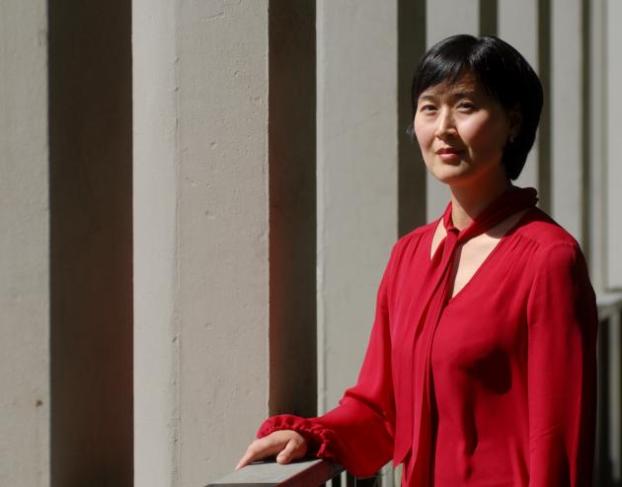 Caption: Eliza Noh studies suicide in the Asian American community. Photo by Kelly Lacefield
Caption: Eliza Noh studies suicide in the Asian American community. Photo by Kelly Lacefield
Desperate Measures
Push to Excel Linked to Suicide in Asian-American Women
ELIZA NOH REMEMBERS her older sister being depressed from the time she started high school until the day she killed herself as a 20-year-old college student in 1990.t
“She had problems with depression and I‘ve found that my sister’s experience is not unique,” said Noh, associate professor and coordinator of Asian American studies.
Noh was a Columbia University undergrad two years after her sister’s death when she began researching suicide among Asians. Today, she continues her research in her quest to raise awareness about the problem and find effective interventions.
“It just became my expertise,” said Noh, who is of Korean and Vietnamese descent.
Noh’s research has produced the following findings:
- Suicide is the second leading cause of death among Asian American women, ages 15-24.
- Asian American women, ages 15-24 and over 65, have the highest female suicide rates across all racial/ethnic groups.
- Asian American adolescent girls (grades 5-12) demonstrate the highest rates of depression across both race/ethnicity and gender.
- “Model minority” expectations and family pressures often are cited as factors of suicide.
“Recent data on the alarming suicide rates among Asian American women are directing increasing public attention to this important mental health issue,” Noh said. “While raising consciousness about these data is crucial, very little is known about Asian American women’s suicides due to the scarcity of empirical studies on the subject, particularly from the perspectives of Asian American women themselves.”
The “model minority” pressure — socially produced pressure internalized by families of some Asian-American children to be high achievers at school and professionally — is a big part of the problem, Noh said.
She has been studying Asian-American women who attempted or contemplated suicide and finds the majority cite the “model minority” pressure as the main culprit for their behavior.
Girls are more affected by family pressure than boys, she said. They are expected to be the “perfect mother, daughter, wife and get only As in school and choose the right type of job.”
Besides family pressure, there are other factors that contribute to the high suicide rate of Asian American women, including social alienation, sexism and racism, Noh said.
The stereotype that Asians are smart and always do well at work, at home and at school also can lead to depression, she said.
Noh said her sister thought she was ugly and got plastic surgery to make her eyes and nose appear more like the white women she grew up around in Houston in the 1970s and ’80s.
Some of the suicidal women Noh has studied reported that their mothers also were suicidal.
While the causes of depression are varied, so are the ways to cope, the researcher said.
“Asian American women suicide survivors employ diverse healing strategies from traditional therapies to alternative practices, such as cultural decolonization through writing and art, spirituality, social activism and Asian medicine, such as acupuncture, “ Noh said. “This seems to suggest that healing models must be flexible enough to accommodate therapeutic as well as extra-therapeutic interventions.”
Because Asian American women tend to stay away from mental health services, “I think more radical approaches are necessary, especially when it comes to matters of life and death as in suicide intervention,” she added. “Ultimately, it may be that achieving mental well-being cannot be found simply through psychotherapy, but by making necessary changes in the sociopolitical environment and creating new, empowering forms of subjectivity that draw from the unique experiences of Asian American women.”
Based on her research, Noh is writing a book on Asian American women's suicides and depression.
October 18, 2010
